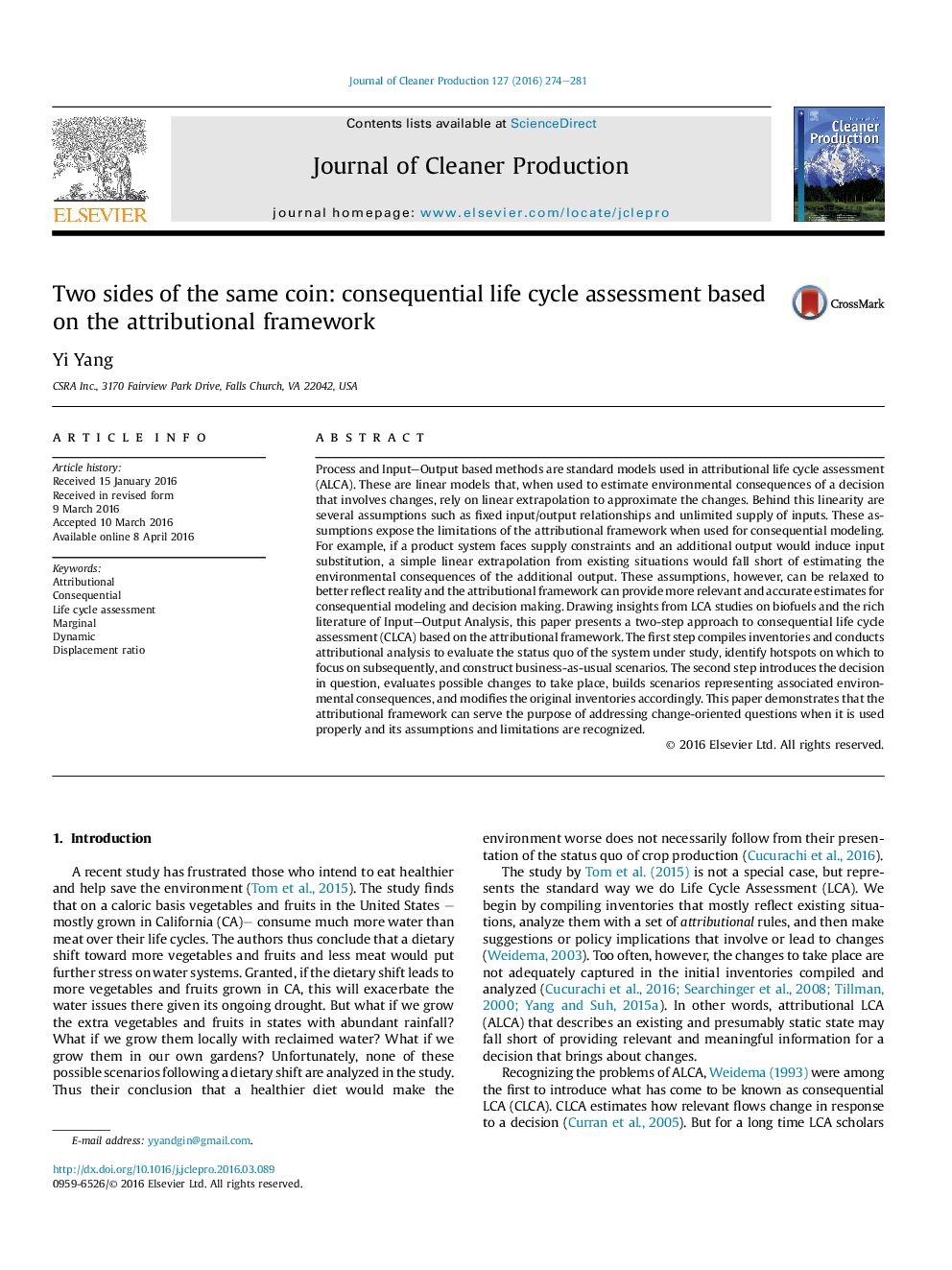| کد مقاله | کد نشریه | سال انتشار | مقاله انگلیسی | نسخه تمام متن |
|---|---|---|---|---|
| 1744085 | 1522122 | 2016 | 8 صفحه PDF | دانلود رایگان |
Process and Input–Output based methods are standard models used in attributional life cycle assessment (ALCA). These are linear models that, when used to estimate environmental consequences of a decision that involves changes, rely on linear extrapolation to approximate the changes. Behind this linearity are several assumptions such as fixed input/output relationships and unlimited supply of inputs. These assumptions expose the limitations of the attributional framework when used for consequential modeling. For example, if a product system faces supply constraints and an additional output would induce input substitution, a simple linear extrapolation from existing situations would fall short of estimating the environmental consequences of the additional output. These assumptions, however, can be relaxed to better reflect reality and the attributional framework can provide more relevant and accurate estimates for consequential modeling and decision making. Drawing insights from LCA studies on biofuels and the rich literature of Input–Output Analysis, this paper presents a two-step approach to consequential life cycle assessment (CLCA) based on the attributional framework. The first step compiles inventories and conducts attributional analysis to evaluate the status quo of the system under study, identify hotspots on which to focus on subsequently, and construct business-as-usual scenarios. The second step introduces the decision in question, evaluates possible changes to take place, builds scenarios representing associated environmental consequences, and modifies the original inventories accordingly. This paper demonstrates that the attributional framework can serve the purpose of addressing change-oriented questions when it is used properly and its assumptions and limitations are recognized.
Journal: Journal of Cleaner Production - Volume 127, 20 July 2016, Pages 274–281
